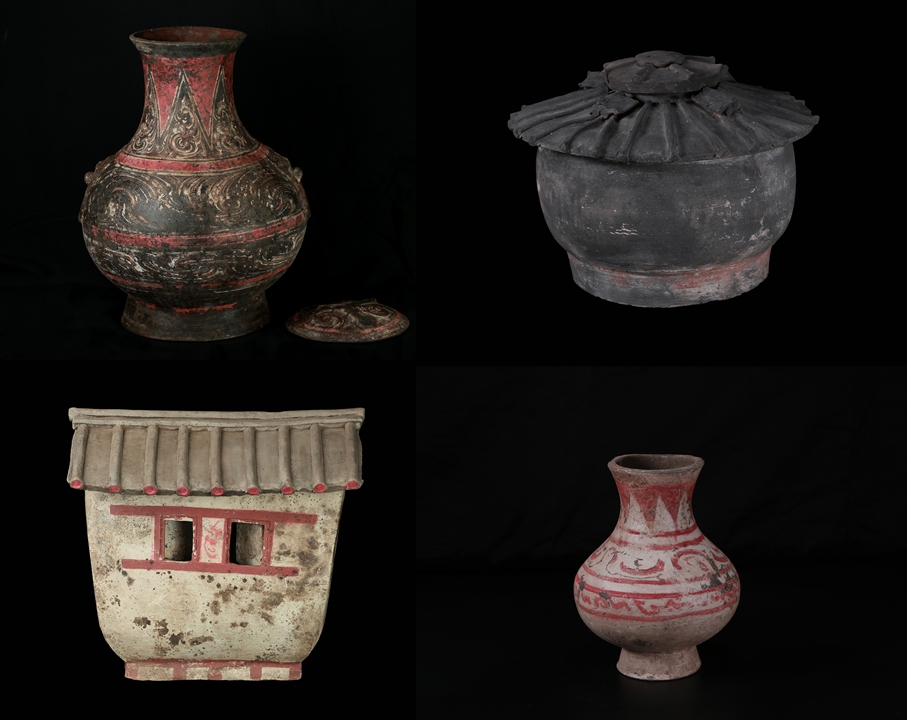Ancient cemetery discovered in Shaanxi Province corroborates written history of China’s Western Han Dynasty
Source: Global Times Published: 2020/11/30 21:54:49

Photo: Xinhua
The Shaanxi Academy of Archaeology on Friday announced that a large-scale ancient cemetery dating back to the Western Han Dynasty (206BC-AD25) has been discovered in Qinhan New City in the Xixian New Area of Northwest China’s Shaanxi Province.
The cemetery belongs to the Da Bao Zi cemetery area. There are more than 100 tombs included in this area, which has been investigated by archeologists since May. The tombs have been identified as belonging to the early Western Han Dynasty.
Nearly 300 relics have been unearthed from the cemetery area, including various burial objects such as pottery, jade and iron wares. Smaller tombs contained only a small number of pottery, bronze mirrors and coins while larger tombs included painted pottery mimicking copper vessels, jades and other more valuable artifacts.
One highlight is a pottery fou engraved with the Chinese characters Xin Ting, a reference to the early Han Dynasty (206BC-AD220) city of Ting in Xin Cheng county. Fou is a type of traditional Chinese vessel used in ancient times to hold water or wine. The vessel was also used by ancient people as a musical instrument during grand banquets.
The Xixian New Area, where the discoveries were made, is related to the city of Xianyang in Shaanxi Province. As pottery relics discovered around Xianyang often bear the characters Xian Ting, in which Xian stands for the city of Xianyang, the discovery of the Xin inscription on the piece of pottery proves the city of Xianyang was later renamed Xin Cheng county during the early Han Dynasty.
“There are references that [Xianyang was changed to Xin cheng] in literature, but similar archaeological evidence was lacking. Now, the appearance of the characters Xin Ting, especially the Xin, happens to show that Xianyang city did change its name in the early years of the Han Dynasty. Also to a certain extent, it not only confirms the renaming, but also indicates the age of the tomb,” Zhang Yin, an associate professor at Shaanxi Normal University and an expert in the archaeology of the Warring States Period (475BC-221BC) to the Han Dynasty, told the Global Times on Monday.
Along with the fou, other pottery wares such as tripods and pots were discovered in the tombs as well. They mainly consist of works imitating copper ritual vessels with smooth lines, complicated patterns and colors that remain vivid despite being buried underground for more than 2,000 years.
“In fact, in an archaeological context, it is quite rare to find such a large cemetery that clearly belongs to the early Western Han Dynasty. Studying this discovery will help us to identify which tombs belonged to the early Han Dynasty and which ones belonged to the Qin Dynasty (221BC-206BC) in the future,” noted Zhang.
Posted in: CULTURE & LEISURE